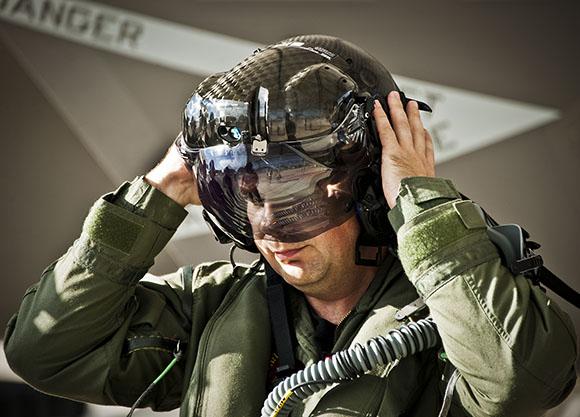It's official: the F-35 helmet is too heavy and during an expulsion it could kill the pilots. This is what the head of the company said a few hours ago Joint Program Office, General Christopher Bogdan. Engineers are trying to reduce the weight of the helmet to prevent potentially lethal neck injuries for pilots who expel themselves from the aircraft.
The helmet problem was discovered last winter. Since then, all tests have been suspended for lighter pilots. In fact, a rider who weighs 60 pounds, can not wear the current helmet from 400 thousand dollars.
"A rider with a weight of 60 kilos (excess tolerance threshold and two kilos), has a chance on 50 thousand to suffer a neck injury in case of expulsion.The pilots that weigh between 63 and 74 pounds, have less risk with a chance on 200 thousand to suffer a potentially lethal injury to the neck ".
It will take another year - added Bogdan - to put in place a safe helmet for all riders.
In addition to the helmet, there has been another problem in recent weeks: this is a "potentially fatal mistake for the pilot's life". This mistake already has a number of potential victims: a third of the riders who will fly with the F-35. In the ejection phase, then we are in an emergency, the system would cause a so sharp whip blow due to an incorrect position of the child seat propelled outside the aircraft. The risk, recognized by the Department of Defense (hence it is not a hypothesis without foundation), is real for pilots between 60 and 65 chili. The Pentagon itself does not know how to solve this problem. The tests have shown that riders, whose weight is slightly near or overweight to the 135 / 140 pounds, have a death probability equal to the 98% during 160 node expulsion. For those who do not know it is the average speed of a takeoff or landing.
The American pilots qualified with the F-35 that fall in this weight category are equal to 7%. Their rating has been suspended. But the problem may have been underestimated because the percentage of risk remains high even for pilots with an average weight.
(see also "F-35: Ready for the third generation of the helmet")












